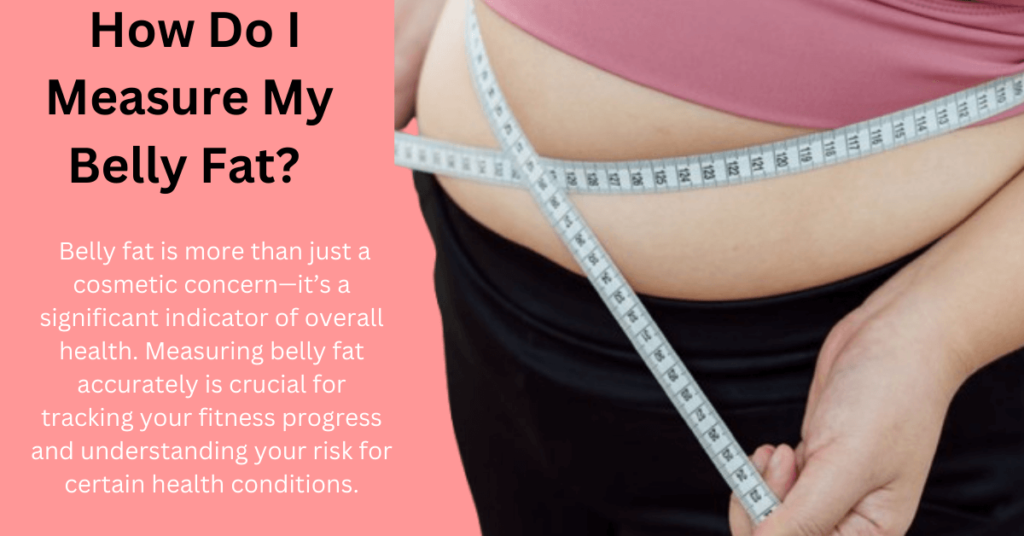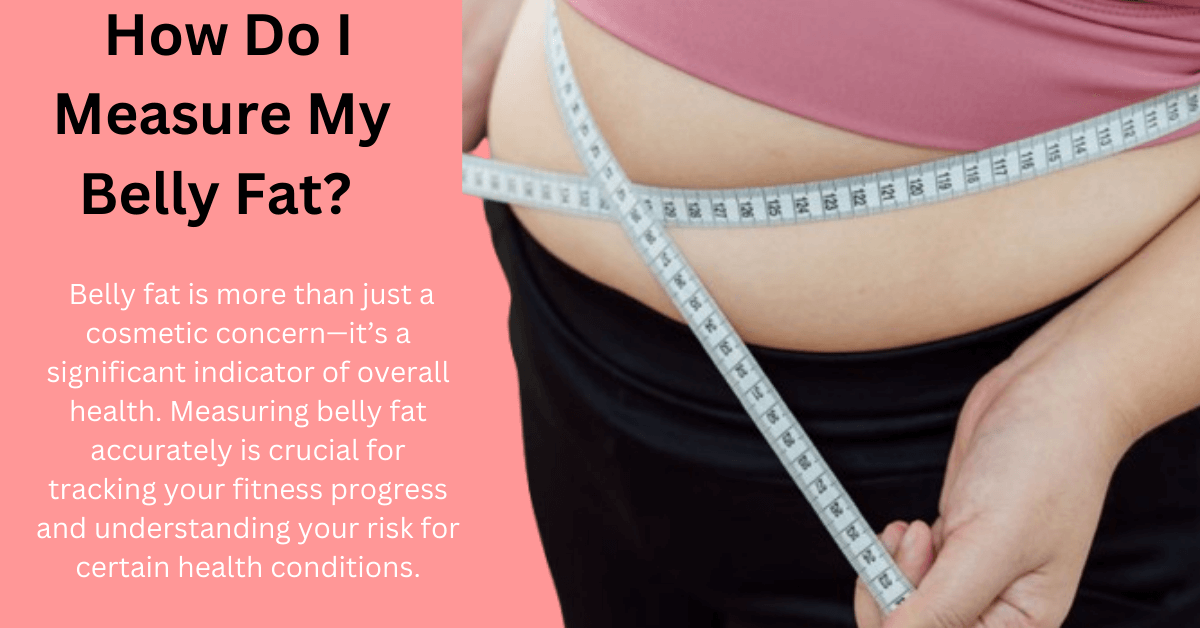How Do I Measure My Belly Fat? Effective Methods and Why It Matters. Belly fat is more than just a cosmetic concern—it’s a significant indicator of overall health. Measuring belly fat accurately is crucial for tracking your fitness progress and understanding your risk for certain health conditions. If you’ve been wondering, how do I measure my belly fat?, this guide provides practical and effective methods to get precise results.

Why Measuring Belly Fat is Important
Belly fat, also known as visceral fat, is stored around your internal organs and can increase the risk of conditions like heart disease, type 2 diabetes, and high blood pressure. Knowing how to measure your belly fat gives you insight into your health and helps you take proactive steps toward improvement.
Key Reasons to Measure Belly Fat:
- Track Progress: Monitor the effectiveness of your diet and exercise routine.
- Health Awareness: Identify potential risks linked to abdominal fat.
- Set Goals: Establish realistic health and fitness goals.
Method 1: Measure Your Waist Circumference
One of the simplest answers to the question, how do I measure my belly fat?, is using a tape measure to determine your waist circumference. This method is quick and effective for assessing fat distribution.
Steps to Measure Waist Circumference:
- Stand upright with your feet shoulder-width apart.
- Use a flexible tape measure and wrap it around your waist, just above the hip bones.
- Ensure the tape is snug but not compressing your skin.
- Record the measurement in inches or centimeters.
Ideal Waist Measurements:
- For women: Less than 35 inches (88 cm)
- For men: Less than 40 inches (102 cm)
Method 2: Calculate Waist-to-Hip Ratio (WHR)
A more comprehensive approach to measuring belly fat is calculating your waist-to-hip ratio (WHR). This method considers your overall body shape and fat distribution.
Steps to Calculate WHR:
- Measure your waist circumference as described above.
- Measure your hip circumference at the widest part of your hips.
- Divide your waist measurement by your hip measurement.
Healthy WHR Guidelines:
- For women: 0.85 or lower
- For men: 0.90 or lower
This method helps determine if you carry more weight around your abdomen compared to your hips, a common indicator of visceral fat.
Method 3: Body Mass Index (BMI) and Belly Fat
While BMI doesn’t measure belly fat directly, it’s a widely used metric to assess body weight relative to height. Combining BMI with other methods can give you a clearer picture of your fat distribution.
How to Calculate BMI:
- Divide your weight in kilograms by your height in meters squared.Formula: BMI = weight (kg) / [height (m)]^2
- Compare your result with BMI categories:
- Underweight: Below 18.5
- Normal weight: 18.5–24.9
- Overweight: 25–29.9
- Obesity: 30 or above
Remember, BMI doesn’t differentiate between muscle and fat, so it should be paired with other belly fat measurement techniques.
Method 4: Skinfold Measurements
If you’re wondering, how do I measure my belly fat?, using skinfold calipers is another effective method. This technique measures the thickness of subcutaneous fat (the fat under your skin).
Steps for Skinfold Measurements:
- Pinch the skin on your abdomen to isolate the fat layer.
- Use calipers to measure the thickness of the fold.
- Repeat the measurement three times and take the average.
Why Use This Method? Skinfold measurements provide a direct way to assess fat levels, though it requires proper technique for accuracy. This method is best performed by a trained professional.
Method 5: Advanced Imaging Techniques
For the most precise answer to how do I measure my belly fat?, advanced imaging methods like CT scans, MRI, and DEXA scans are unparalleled. These techniques provide detailed insights into visceral and subcutaneous fat levels.
Common Imaging Techniques:
- CT Scan: Offers a cross-sectional view of fat distribution.
- MRI: Provides high-resolution images of visceral fat.
- DEXA Scan: Measures overall body composition, including fat, muscle, and bone density.
While these methods are accurate, they are costly and usually reserved for medical or research purposes.
Which Method is Best for You?
Choosing the best method depends on your goals, resources, and level of accuracy required. Here’s a quick comparison:
| Method | Accuracy | Cost | Convenience |
|---|---|---|---|
| Waist Circumference | Moderate | Low | High |
| Waist-to-Hip Ratio (WHR) | Moderate | Low | High |
| BMI | Low | Low | High |
| Skinfold Measurements | High | Moderate | Moderate |
| Imaging Techniques | Very High | High | Low |
Tips for Accurate Measurements
- Consistency is Key: Always measure at the same time of day, preferably in the morning.
- Use a Reliable Tape Measure: Ensure your tape measure doesn’t stretch or warp.
- Wear Minimal Clothing: Avoid bulky clothing that can interfere with measurements.
- Track Progress Over Time: Measure regularly and note changes to evaluate your progress.
What to Do After Measuring Belly Fat
Once you’ve answered the question, how do I measure my belly fat?, it’s time to take action. Here are a few tips to reduce and manage belly fat:
- Adopt a Healthy Diet: Focus on whole foods, lean proteins, and healthy fats.
- Exercise Regularly: Combine cardio with strength training to burn fat effectively.
- Manage Stress: High stress can lead to increased cortisol levels, which promote fat storage.
- Get Enough Sleep: Poor sleep quality is linked to higher belly fat.
- Stay Hydrated: Drinking water helps reduce bloating and improves metabolism.
Final Thoughts
Measuring belly fat is an essential step in understanding your health and setting achievable fitness goals. Whether you opt for simple methods like waist circumference or advanced imaging techniques, the key is consistency and combining measurements with actionable steps. So the next time you ask yourself, how do I measure my belly fat?, you’ll have all the tools and knowledge to do it accurately and effectively.

